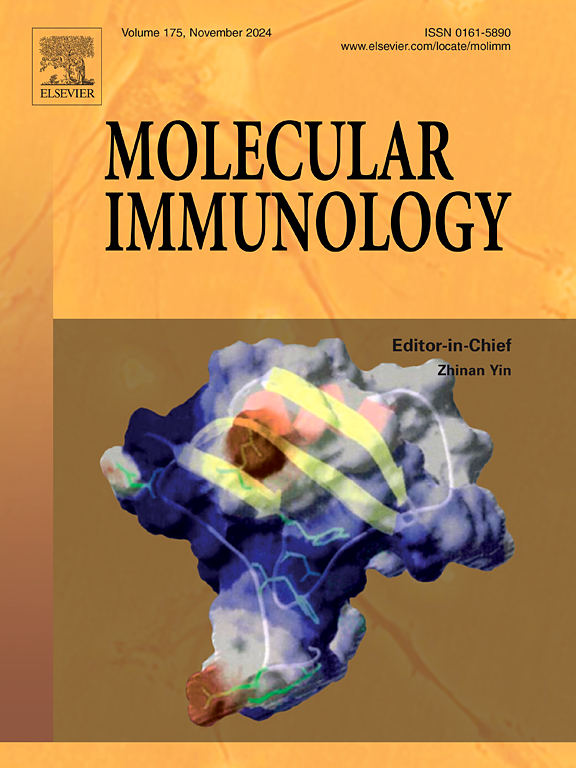药物开发中的智能材料:用于药物传递和抗肿瘤作用的中性粒细胞及其成分
IF 3.2
3区 医学
Q2 BIOCHEMISTRY & MOLECULAR BIOLOGY
引用次数: 0
摘要
近年来,以中性粒细胞为基础的肿瘤靶向药物输送系统得到了广泛的研究。包括集落刺激因子(csf)在内的趋化细胞因子将包括中性粒细胞在内的各种免疫细胞招募到肿瘤微环境(TME),从而促进转移。这些细胞因子可以被免疫治疗药物如检查点抑制剂和单克隆抗体有效靶向,从而导致全身毒性。为了最大限度地减少全身不良反应,伪装纳米颗粒可以作为替代治疗剂使用。中性粒细胞相互作用的NPs和中性粒细胞膜包被的NPs在体外具有抗肿瘤特性,并且在体内具有有限的全身不良反应。来自免疫细胞的中性粒细胞衍生的外泌体可以有效地逃避免疫监视并通过血脑屏障。它们具有纳米级、极具生物相容性、非免疫原性、可生物降解、稳定、可携带毒性有限的靶向药物和抗肿瘤特性等特点。此外,基于中性粒细胞的纳米疗法依赖于中性粒细胞动力学和NPs的物理化学性质(如大小、形状和表面化学)等因素。因此,利用中性粒细胞为基础的聚合物纳米颗粒给药治疗癌症被广泛研究,因为它们在纳米医学中的临床应用仍处于起步阶段。本文章由计算机程序翻译,如有差异,请以英文原文为准。
Smart materials in pharmacological drug development: Neutrophils and its constituents for drug delivery and consequent antitumor effects
Neutrophil-based drug delivery systems for targeted therapy of cancer have been studied widely in the recent past. Chemotactic cytokines including colony-stimulating factors (CSFs) recruit various immune cells including the neutrophils to the tumor microenvironment (TME) leading to enhanced metastasis. These cytokines can be targeted effectively by immunotherapeutic agents such as checkpoint inhibitors and mAbs that can lead to systemic toxicity. To minimize the systemic adverse effects, camouflaged nanoparticles can be used significantly as alternative therapeutic agents. The neutrophil-interacting NPs and neutrophil membrane coated NPs have been exploited recently for their antitumor properties in vitro and pose limited systemic adverse effects in vivo. Neutrophil-derived exosomes derived from immune cells can efficiently escape immune-surveillance and pass through the blood-brain barrier. They possess several intrinsic properties in drug delivery as they are nano-sized, extremely biocompatible, non-immunogenic, biodegradable, stable and can carry targeting agents with limited toxicity and display antitumor properties. Also, neutrophil-based nanotherapy is dependent on factors such as neutrophil kinetics and the physicochemical properties of NPs such as size, shape, and surface chemistry. Therefore, neutrophil-based drug delivery for cancer therapy via the use of polymer nanoparticles is widely studied as their clinical appliance in nanomedicine is still at its infancy.
求助全文
通过发布文献求助,成功后即可免费获取论文全文。
去求助
来源期刊

Molecular immunology
医学-免疫学
CiteScore
6.90
自引率
2.80%
发文量
324
审稿时长
50 days
期刊介绍:
Molecular Immunology publishes original articles, reviews and commentaries on all areas of immunology, with a particular focus on description of cellular, biochemical or genetic mechanisms underlying immunological phenomena. Studies on all model organisms, from invertebrates to humans, are suitable. Examples include, but are not restricted to:
Infection, autoimmunity, transplantation, immunodeficiencies, inflammation and tumor immunology
Mechanisms of induction, regulation and termination of innate and adaptive immunity
Intercellular communication, cooperation and regulation
Intracellular mechanisms of immunity (endocytosis, protein trafficking, pathogen recognition, antigen presentation, etc)
Mechanisms of action of the cells and molecules of the immune system
Structural analysis
Development of the immune system
Comparative immunology and evolution of the immune system
"Omics" studies and bioinformatics
Vaccines, biotechnology and therapeutic manipulation of the immune system (therapeutic antibodies, cytokines, cellular therapies, etc)
Technical developments.
 求助内容:
求助内容: 应助结果提醒方式:
应助结果提醒方式:


